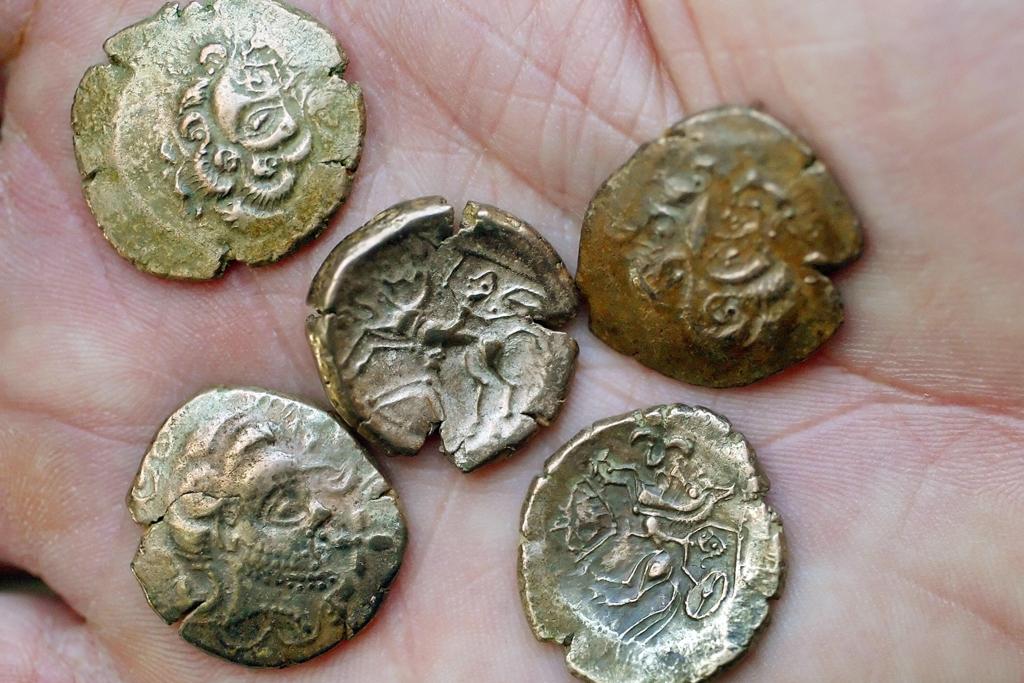Australia: ancient African coins suggest continent was ‘discovered’ earlier than 1606
A massive hoard of coins from the Iron Age, similar to these, were found by two metal detector enthusiasts in Jersey after a search that spanned 30 years.
An Australian anthropologist plans to lead an expedition to the Wessel Islands off the coast of northern Australia in July to excavate a site where five ancient African coins were found.
The coins, discovered by Australian soldier Maurie Isenberg in 1944 and turned over to a museum, are 1,000 years old, and were forgotten until recently. But they raise a question that the anthropologist, Indiana University professor Ian McIntosh, hopes to answer: Did sailors from Africa or other areas travel to Australia centuries before Dutch explorer Willem Janszoon “discovered” the continent in 1606?
“This trade route was already very active, a very long period of time ago, and this may evidence of that early exploration by peoples from East Africa, or from the Middle East,” McIntosh told Indiana Public Media.
The African coins, made of copper in the 900s to 1300s, come from the former trade port of Kilwa, which was located on an island off Tanzania.
According to the Age:
The trade with gold, silver, pearls, perfumes, Arabian stone ware, Persian ceramics and Chinese porcelain made the city one of the most influential towns in East Africa at the time.
McIntosh’s team will follow a map drawn nearly 70 years ago by Isenberg, who marked the spot on the beach where he found the coins with an “X.”
More from GlobalPost: Danish teen finds Viking coins with metal detector
The story you just read is accessible and free to all because thousands of listeners and readers contribute to our nonprofit newsroom. We go deep to bring you the human-centered international reporting that you know you can trust. To do this work and to do it well, we rely on the support of our listeners. If you appreciated our coverage this year, if there was a story that made you pause or a song that moved you, would you consider making a gift to sustain our work through 2024 and beyond?
